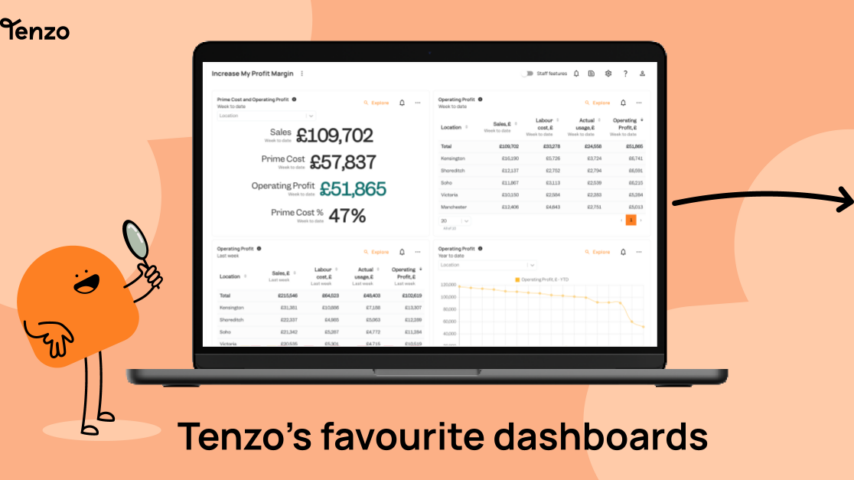In this article
It’s a decision no operator really wants to make: should we send people on the team home? It might be because the weather has turned and walk-ins have been washed away, the Deliveroo promo isn’t working because there’s a driver shortage, or just that demand isn’t what you thought it would be.
Ideally, your shift would be set well in advance and there would be no need to change things last minute. Unfortunately, the reality is that these things happen and GMs or shift leaders need to make in-the-moment decisions as to whether keeping people on shift or sending them home will have more of an impact on business performance.
However, most of the time GMs don’t have any tools to help with this decision – they don’t know what impact losing a team member may have later down the line. In this piece, we’ll be looking at how businesses can address this issue in the most fair and efficient way possible and strategies to avoid the need to send people home in the first place.
How do you know if you should be making more same-day labour decisions?
The first thing to address is if you do have some room for improvement in your labour decisions. A good starting place is to examine your planned vs actual labour cost. Is there consistently no variance? While being able to plan effectively in advance is important for hospitality businesses, if you’re never seeing any variance between planned and actual, it could mean that there is some opportunity to optimise your staff schedule.
The next thing to consider is what your labour costs by site look like on a daily level not just weekly. If your sites are consistently hitting weekly labour cost as a percentage of sales targets, then it’s worth looking closely at the daily costs. Are GMs potentially overstaffing at the beginning of the week and then working a skeleton crew on the final few days to make sure they don’t go over target? It’s something we see surprisingly often that isn’t picked up unless you dive into the granular data.
This labour data should be reviewed regularly across all sites at the head office level so you can find disparities, but GMs should also be encouraged to look into the data. Seeing issues at site levels gives GMs the data they need to take action.
What challenges do GMs encounter if they do decide to subtract staff?
GMs have to overcome several challenges if they want to make these kinds of decisions.
Firstly, GMs are usually only provided with a daily demand forecast. That means that they have no visibility of how demand will fluctuate throughout the day. If it’s quiet in the morning or at lunch, but the demand forecast shows high guest levels, they may think that it will be a busy evening and keep people on. But if they are provided with an hourly forecast and they can see that the evening is predicted to quieter than lunch and lunch already was below what was expected, they can be much more confident in sending someone home.
The next issue is real-time data. If only your head office has access to real-time data reporting then the people on the ground are flying blind. They typically don’t know how they’re performing against the hourly forecast or what their live COL% is, so they can’t make adjustments in the moment. However, if every GM has access to easy reporting that gives them live data on how their site is performing, they can easily make in-the-moment decisions.
Finally, as we mentioned, it’s not exactly enjoyable to have to send people home. The GM has to measure the needs of the business alongside the needs of the people working. If someone is expecting a certain number of hours and they don’t get them, it genuinely impacts their livelihood. Often, businesses do not have plans in place to avoid the surprise of being sent home and that can have a severely detrimental effect on team morale.
What metrics do your GMs need access to?
To have the right data to make these decisions, we recommend arming GMs with a real-time view of what’s happened so far today as well as a forecast of what’s going to happen.
First, give them what the plan was: their planned labour cost, the sales forecast for the day, the planned cost of labour as a percentage of forecast sales, and the target cost of labour percentage. This gives visibility of what their results would be if the day went perfectly.
Then equip the team lead with a view of how things are currently going. That includes actual labour cost today so far, actual sales numbers so far, and then actual cost of labour percentage. When they see this side-by-side with the plan, they can see if anything is off.
Finally, showing a graph of hourly sales compared to last week or an hourly forecast gives them the option to see if the sales pattern is the same or if there is an anomaly and they need to make changes.
With this real-time view, they can assess whether the number of team members they have is still appropriate.
What actions can you take with this information?
If you decide that having the tools to make these in-the-moment decisions is the right direction to go in, then there are ways of taking action on the insight fairly and transparently.
How to think about cutting hours
Cutting team members is not something to take lightly. The worst possible thing is cutting someone who is not expecting it. But how can you prepare teams for last-minute changes?
One of the most effective methods we’ve come across is scheduling everyone a set number of hours and then giving the team the option to pick up extra hours throughout the week where they understand that if they’re overstaffed, they will be the ones going home. This way, it doesn’t impact the base level of hours they work but gives them the chance to pick up extra shifts if needed.
Alternatively, implementing a simple rota around who is sent home and choosing someone different every time makes it much more fair and doesn’t unfairly affect one person more than another. Being clear about how the rota works and giving team members notice of when it’s their turn also helps with transparency.
Having a very clear process in place and setting expectations ahead of time means it’s not such a blow to the person being sent home.
Alternatives to sending team members home
Fortunately, there are alternatives to having to send people home. Strategies include driving more sales, training people so they can float between BOH and FOH, and having a multi-site team.
- Driving Sales
If your in-store sales are lower than expected, driving sales through other channels is an option. We’ve seen restaurants use Uber Eats or Deliveroo promotions extremely effectively to increase sales numbers when footfall drops. The benefits of delivery aggregators are that you can make split-second decisions: if the demand gets too high, you simply pause deliveries again.
Alternatively, increasing each guest’s in-store transaction value can also achieve the same result. If you use digital menu boards outside your business, having a go-to promotion that you know can drive more foot traffic to the store is a great way to drive sales on a slower day.
- Crosstrained team members
A more long-term strategy, cross-training your employees to fulfil multiple roles if needed means that you can have someone floating between front- and back-of-house to be used where most impactful. This could be someone who can take orders on the floor, but if it’s not busy can be swapped in to prep ingredients for tomorrow or to fulfil delivery orders.
By investing in your employees in this way, you are proving that you care about their well-being and want them to get the most out of their employment. It also provides skills that will inevitably be helpful in their future career.
- Head office multi-site strategy
If your brand has multiple sites closely located to one another, a great strategy is handling labour deployment from head office. Everyone has a ‘base’ location, but if sales are looking low at that site, they can be swapped into another where more hands are needed.
This is something that only works if the operational processes are the same at every location or where you’re able to train across multiple locations, but can be invaluable to have the flexibility to use your resources where they’re most needed.
Conclusion
Planning as well as possible in advance is key to staff happiness and efficient operations, but sometimes things happen that are outside your control. If that’s the case having a plan in place and the tools needed to make these kinds of decisions is crucial. Once managers have the data they need, they can employ new strategies to make sure performance is maintained.
If you’re interested in seeing how Tenzo can help your labour operations, then get in touch!





